Ayoola Salako is a multimedia storyteller and marketing professional whose creative storytelling and technology have led him to work for top brands. He leads marketing operations and storytelling efforts for LemFi.
Explain your job to a five-year-old
I take pictures and videos of the cool things my friends and I do and then show them to a lot more people using the internet or mass media. These pictures and videos help people understand our business and keep us at the top of people’s minds.
How do you adapt your storytelling approach for different clients?
I think about the most effective way to tell the business’s story. I find references that match the client’s needs and use those references to guide the storytelling.
What’s your process for collaborating with clients who may not have a clear vision for their project?
I ask questions to understand the client’s needs, present a few references that match what they might be looking for, and then work with them to choose the best direction.
What are some of the biggest challenges you’ve faced in remote collaboration on multimedia projects?
Translating the details and subtle nuances to media producers is sometimes difficult. Often, production companies and agencies don’t understand why I need content in specific formats or durations, which complicates the process.
Beyond production, how do you measure the success of a storytelling project?
I measure success based on the impact and how well people can relate to the story. For example, I once worked on a documentary about a traditional bone healer that led someone from the US to come to Nigeria to visit the healer. I also look at how organically a story spreads and resonates with audiences, as with a campaign I did that went viral because people thought it was part of a TV show, not an ad.
What exciting things are you working on now?
I’ve moved from being purely a brand storyteller to taking on a more strategic role that involves crafting narratives and integrating project management, legal compliance, and data analysis into my work.
This evolution happened as I started working on a market expansion campaign in Ghana, where I realized that my role was expanding. I found myself asking the “so what?” question—essentially ensuring that every piece of content or strategy directly ties into specific metrics or goals.
My current focus is on blending my storytelling background with growth strategies, working closely with various teams like product, engineering, data, legal, and finance. This multidimensional role allows me to contribute to more intentional and metric-driven campaigns, making my work both challenging and fulfilling.
Given your love of documentaries, what story would you jump at the chance to tell, given the opportunity?
I would love to tell the story of a wildlife ranger in a park. I want to follow them and document their lives, understanding what inspires them to protect wildlife and what their day-to-day life is like.
We don’t see much of that in West Africa. We’ll often hear these stories told in Kenya, East Africa, or even Southern Africa, but those stories are needed here.
You describe yourself as a “Student of the internet”—can you share a recent online discovery that blew your mind, related to storytelling or technology?
Recently, I learned about home automation protocols like Zigby and Z-Wave, which allow devices to communicate without Wi-Fi. This was a significant discovery for me because I always thought everything relied on Wi-Fi.
In storytelling, I discovered James Tulland on YouTube, who tells life stories from a unique point of view, such as what life is like for a great white shark, highlighting how much we still don’t know about the ocean.


















